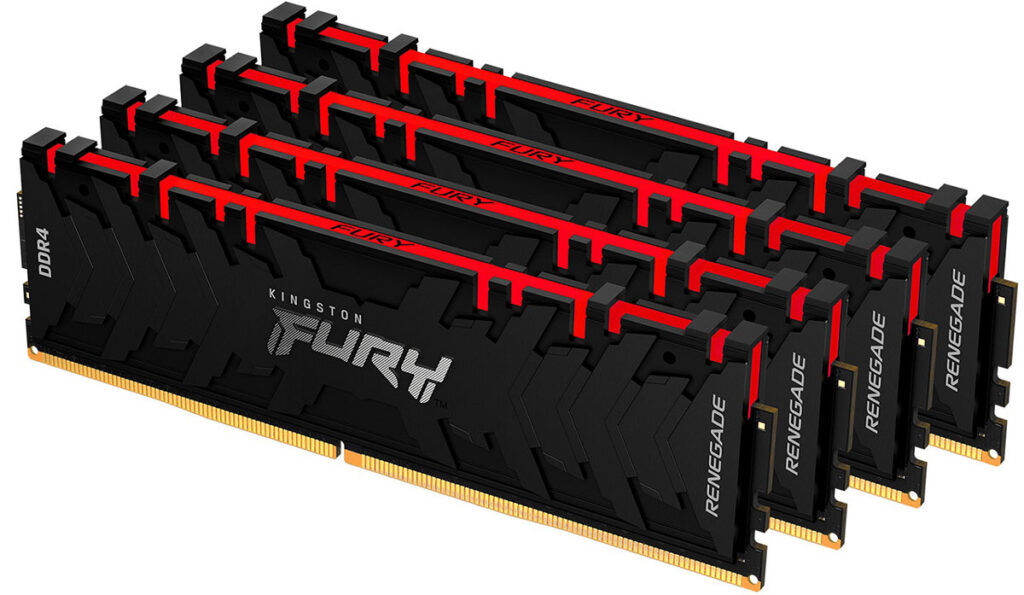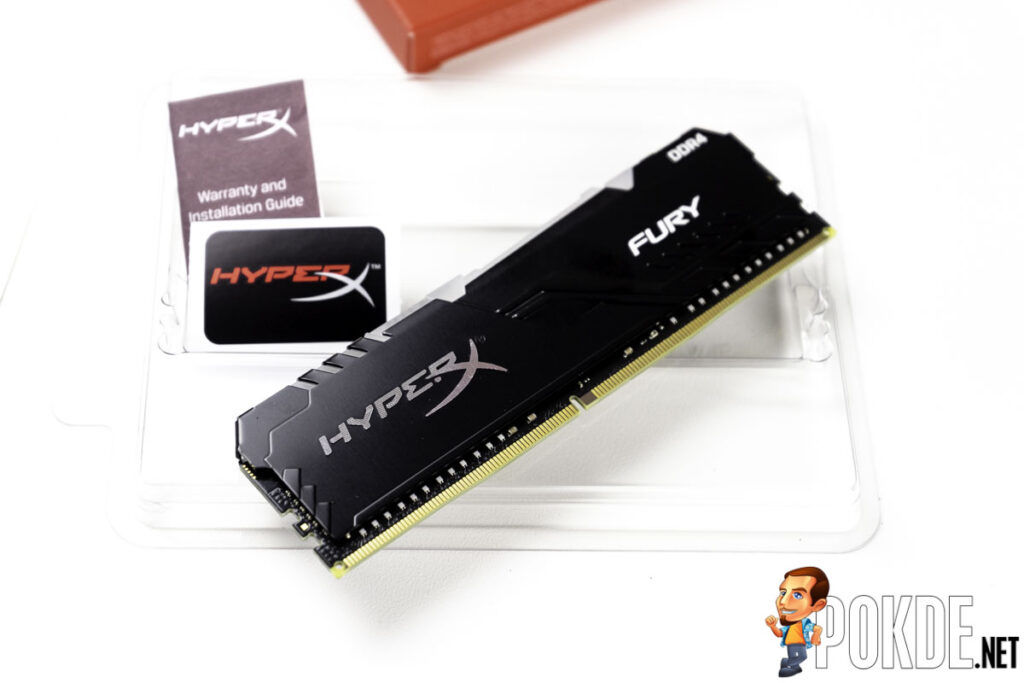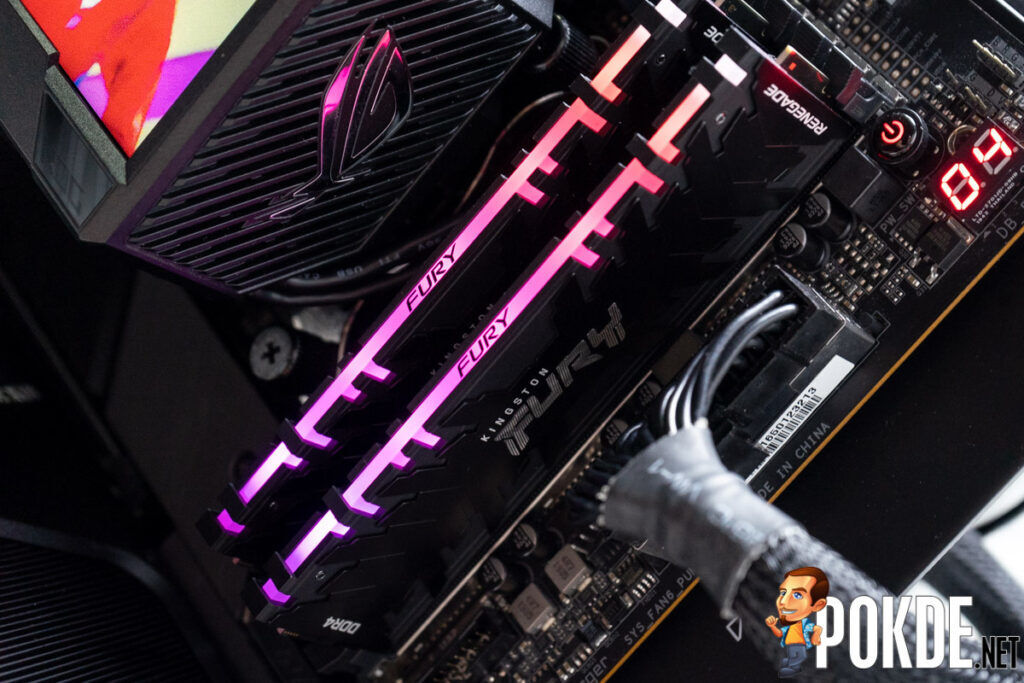DDR5 vs DDR4 — here’s what you need to know!
As we get closer to the launch of the 12th Gen Intel Core processors, you might be interested to know what are the main differences between DDR4 and DDR5. Obviously, DDR5 is newer, and newer usually is better when it comes to tech, but hey, let’s break down the key differences, and why they matter to you.
DDR5 offers up to 2X the speed
The JEDEC specification for DDR5 starts at DDR5-4800, which is a good 50% higher than the fastest JEDEC spec for DDR4, which tops out at DDR4-3200. The current JEDEC specification for DDR4 also scales all the way up to DDR5-6400, which is essentially double the bandwidth of DDR4-3200.
Of course, we are just talking about JEDEC specs, and you can get DDR4 memory that can go well beyond that, with DDR4-5333 kits available in the market, and manual overclocking has seen speeds in excess of DDR4-7200. It is worth mentioning that SK Hynix has plans for DDR5-8400 in the future too, so DDR5 definitely still has room to grow.
Kingston and other memory vendors have already committed to bringing overclocking DDR5 memory to the market soon, so you can expect to see speeds well beyond DDR5-4800 in the coming months. Motherboard vendors will also have to work with them to streamline the overclocking experience with BIOS optimizations, so there are definitely some exciting times ahead.
It is also worth mentioning that we are currently talking about the speed in terms of data rate, which is measured in Mbps/Gbps. If you want to talk about clock speeds, DDR5-4800 delivers its 4800Mbps at 1.6GHz clock rate, versus DDR4-3200’s 3200Mbps at 1.6GHz. A lot of technology went into making this possible, including Decision Feedback Equalization (DFE), which lowers the interference to enable the higher data rates we are seeing here.
DDR5 offers significant memory efficiency gains
Aside from just raw bandwidth, DDR5 also offers significant improvements in the way of memory efficiency. This is achieved via several key changes coming from DDR4. Firstly, instead of a single channel per stick like with all the prior generations of DDR memory, you get two channels per DIMM with DDR5. DDR5 also touts twice the burst length, as well as support for twice the bank groups.
Dual channel per DIMM? Quad-channel with just two DIMM?
With DDR4, you get 64-bit (or 72-bit with ECC) memory channels. Most people will run two DIMMs, to get double the effective bandwidth. DDR5 gives you two 32-bit wide (40-bit wide, with ECC) channels per stick, which means that you get a quad-channel configuration when running two DIMM, like you would in your current system.
Four 32-bit channels versus two 64-bit channels gives you the same 128-bit total memory bus width, but DDR5’s quad-channel configuration allows for more fine-grained commands to each channel, which improves the overall bandwidth by allowing for more data transfers per DIMM, which is especially beneficial for today’s multi-core processors.
2X longer burst length
As compared to DDR4’s BL8 burst length, DDR5 boasts a burst length of BL16. This allows a single burst to to access 64B of data on DDR5, which is the typical CPU cache line size. In combination with DDR5’s architecture that makes for the two memory channels per DIMM, you get improved concurrency and better memory efficiency by letting the CPU pull 64B of data from separate locations.
Support for 2X bank groups
DDR5 brings support for up to eight bank groups, up from four with DDR4. With more bank groups, the overall bandwidth can be much higher, as same-bank sequential memory accesses suffer from lowered performance. Aside from supporting more bank groups, DDR5 will also have a fine grain bank refresh feature, letting some banks refresh while others are in use to lower the latency, and also allowing for unused banks to be available sooner.
You can get 128GB DDR5 DIMM
While they might not be available right off the bat, DDR5’s JEDEC specs supports all the way up to 128GB DIMMs with 64Gb dies. With DDR4, the limit was 32GB per stick. This massive leap is partly enabled by the presence of On-die Error Correction Code (ECC). Basically, this allows for higher tolerances when it comes to packing ever higher densities, which should improve yields and hopefully allow for memory vendors to bring more affordable DDR5 kits to market. One thing to note is that DDR5’s on-die ECC is not equivalent to existing ECC memory as it cannot correct errors outside the memory chips.
DDR5: lower voltage, lower power consumption
While you will be enjoying higher bandwidth and efficiency with DDR5, you will also be saving a little bit of power. With DDR5, the operating voltage is just 1.1V, down from 1.2V. Of course, this is according to JEDEC specification, and you will most probably see overclocked DDR5 RAM taking advantage of the Intel Extreme Memory Profile (XMP) 3.0 standard to push for higher voltages and higher performance. A lower voltage will also mean lower power consumption, so while that might not be too huge a factor in the desktop space, mobile DDR5-based systems will potentially offer better battery life, which is always nice to have.
Along with the lowered power consumption, a major change with DDR5 is the fact that the voltage regulation is moved onto the DIMMs, whereas it was previously the responsibility of the motherboard to supply clean power to the memory. This will also mean that DDR5 memory sticks will probably cost more, since it now not only hosts the memory ICs but also the voltage regulation circuitry, but it also means that you might be able to get by with simpler (read: more affordable) motherboards.
DDR5 Cost?
And that brings us nicely to the point of the cost of DDR5 memory. As with every new generation of memory, prices will be quite high at launch. According to MSI, the premium might be as much as 50 to 60%, as compared to DDR4 at launch. DDR4 prices are a lot more affordable now than they were at launch, so you might be looking at a very steep price hike as compared to what you will have to pay for a kit of DDR4 right now.
The good thing to note is that the 12th Gen Intel Core platform is developed with support for both DDR4 and DDR5, so if you think that the aforementioned benefits of DDR5 is not something you need, you can look for the Intel 600-series LGA1700 motherboards that support DDR4 instead. Obviously, DDR5 and DDR4 slots are not interchangeable, so you will have to change your motherboard when you finally decide to make the jump to DDR5.
DDR5 Launch Date
With the imminent launch of the 12th Gen Intel Core Alder Lake platform, rumored for 4th October, you can also expect memory vendors like Kingston to make their DDR5 offerings available at around the same time. Obviously, as the first platform to bring support for DDR5, memory vendors have worked with the chipmaker to ensure that their memory solutions are compatible. Kingston is the first third-party vendor to receive Intel Platform Validation for their DDR5, so if you are worried about compatibility, their memory is probably going to be a prime choice.
TL;DR DDR5 vs DDR4
In case you just didn’t want to read the entire article, which I strongly recommend you do, here’s a summary of what’s what with DDR5 vs DDR4.
[table]
| DDR5 | DDR4 | |
| Data rate / Clock | DDR5-4800 ~ DDR5-6400 1.6GHz ~ 3.2GHz |
Up to DDR4-3200 Up to 1.6GHz |
| Channels | 2 x 32-bit (40-bit with ECC) per DIMM | 1 x 64-bit (72-bit with ECC) per DIMM |
| Burst Length | BL16 | BL8 |
| Bank groups | 8 | 4 |
| Maximum capacity | 128GB | 32GB |
| On-die ECC | Yes | No |
| Voltage | 1.1V | 1.2V |
[/table]































